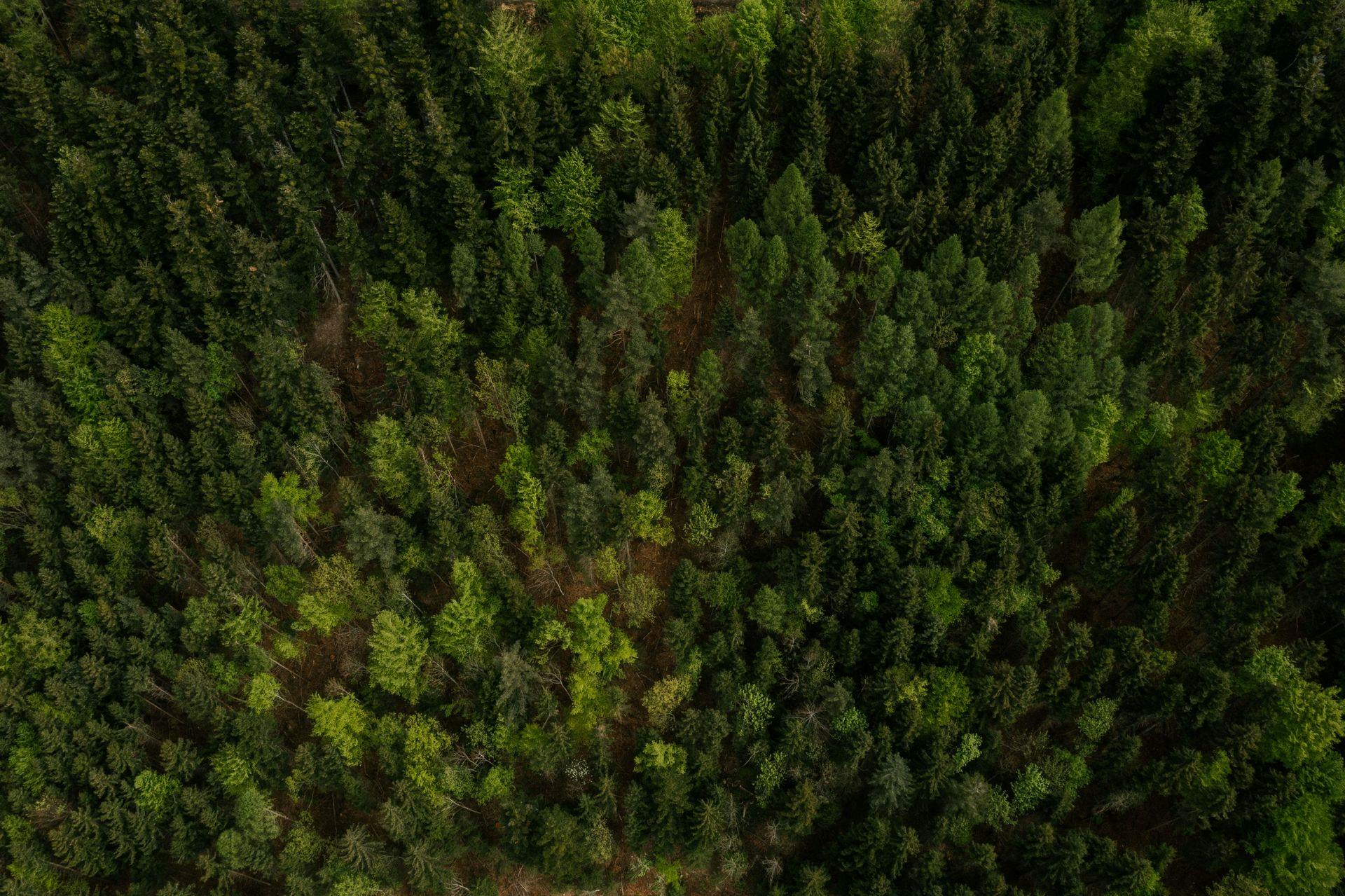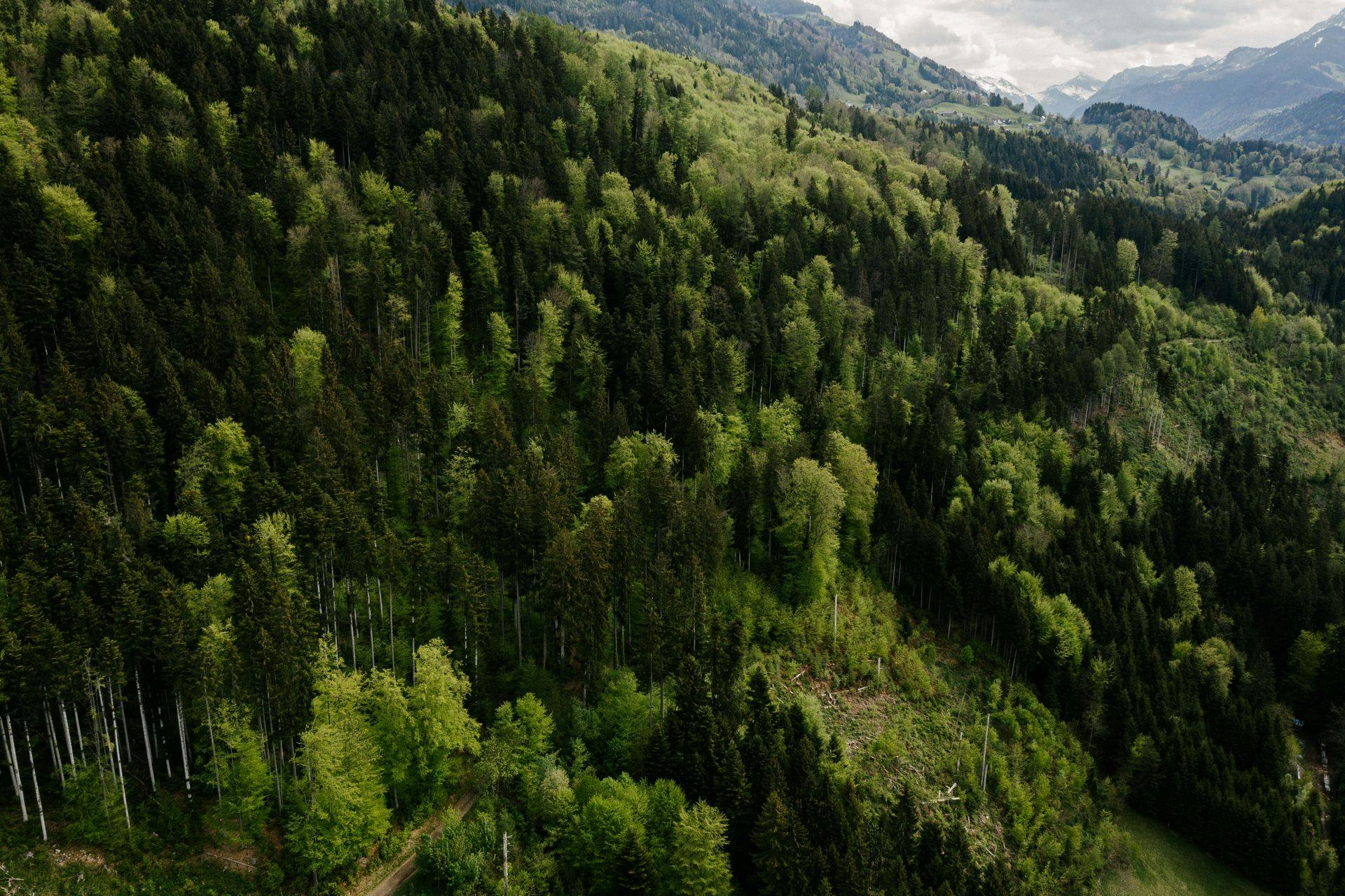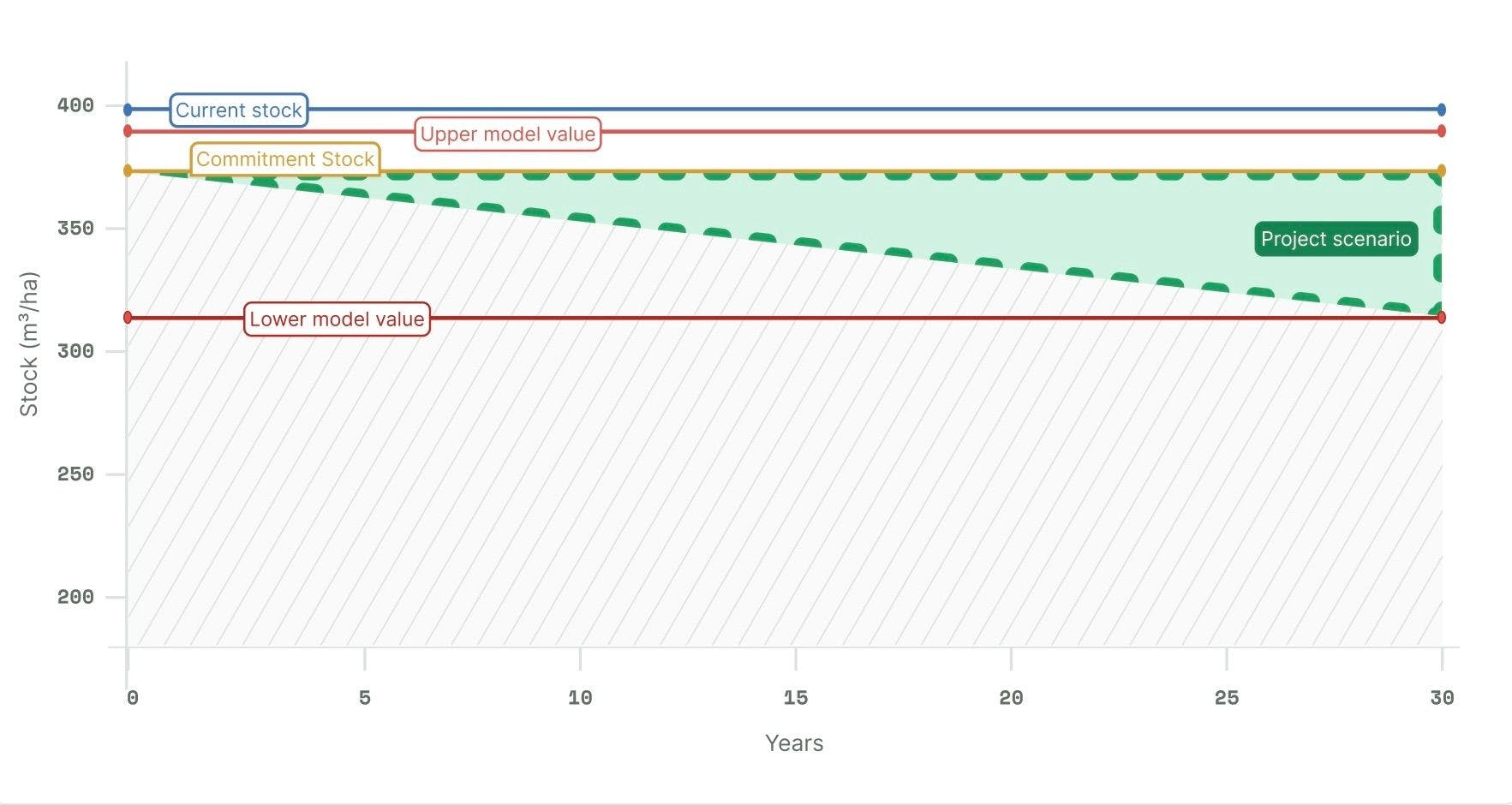
Our methodology
The forest carbon cycle
Nature-based carbon projects underlie the natural carbon cycle. In relation to the forest, this means that the CO₂ in the air is bound in organic material (C₆H₁₂O₆) through photosynthesis. This sink is in contrast to CO₂ sources (e.g. biomass decomposition), which in turn emit CO₂ into the atmosphere. The forest is both a sink and a source.
In natural forests in temperate zones, the growth and decay of tree biomass are largely balanced - which is why it is considered "neutral". If a forest is managed sustainably, the decay cycle is shortened, or the amount of decay is significantly reduced compared to natural forests. This turns the forest into a sink. By using the extracted biomass in wood products that are as long-lasting as possible, additional emissions reduction effects can be achieved.



The systems and markets for achieving the EU climate goals
The EU Emissions Trading System (ETS)
The EU emissions trading system works according to a “cap and trade” procedure and represents the regulated CO₂ market in the EU. The most emissions-intensive companies in the EU are allocated a certain amount of emission allowances every year. If more is emitted than authorized, then you have to pay for the amount above.


Voluntary CO₂ market
The SILVACONSULT® Forest Carbon Standard methodology is currently only used by Tree.ly in the voluntary market. In order for companies to receive credits from Tree.ly, they must submit an emissions reduction plan. In addition, companies are shown what they are allowed to communicate with the credits and what they are not. This means that higher standards are voluntarily set.
The SILVACONSULT® Forest Carbon Standard
Our methodology of choice


Scientifically validated
TÜV Nord confirms success in September 2022
Structure of the methodology
Reference scenario (baseline)
Basically, the reference scenario represents how greenhouse gas emissions would develop without the climate protection project to be implemented. In the SILVACONSULT® Forest Carbon Standard methodology, an upper and lower model value for the average standing tree biomass, or the standing stock per hectare [m³/ha], is calculated individually for each project. According to forest science, this model value range represents the optimal stock for the respective project area. The lower model value is calculated from a normal stock, which is determined using regionally valid yield tables, conditions from the forest growth areas, tree species, credit ratings and management methods. The upper model value is determined by multiplying the normal stock by a factor, which is determined depending on silvicultural assumptions and planning for the next 30 years, as well as a risk analysis for the project area. In projects with adapted management, the reference scenario must always be between the lower and upper model values and depends on the project type (see project types).


Upper model value and project scenario
The project scenario describes how greenhouse gas emissions will develop with the implementation of the climate protection project. In the SILVACONSULT® Forest Carbon Standard methodology, this depends on the current average stock of standing tree biomass [m³/ha]. Depending on whether this current average stock is between the two values or above the values, it is possible to build up or maintain stocks. The conversion factor from Vfm to tCO₂ is used to determine greenhouse gas development from the development in the forest. The values for this come from the national greenhouse gas balances and the individual tree species distribution on the project area.

The project types
Carbon removal projects

Carbon conservation projects

Additionality, leakage and permanence
Additionality
When implementing climate protection projects, it must be proven that the project leads to additional emissions savings and would not be implemented anyway (even without the sale of emissions credits). For example, less wood use and an extension of rotation times will increase the average supply on the project area in the long term. As part of our climate protection projects, the forest owner can either: A) Commit to maintaining a certain stock within the defined model values over the duration of the project or B) Build a target stock within a defined time within the model values. The distinction between A) “carbon conservation” and B) “carbon removal” is also made in the Paris Climate Agreement.


Leakage
Leakage is the shifting of greenhouse gas emissions. This occurs when emissions arise elsewhere due to the implementation of a climate protection project and emissions that should be avoided (partially) do occur. These risks exist primarily in forest or land use projects. An example of this would be if forests are cleared elsewhere due to the reforestation of pasture land because new pasture areas are needed. A general distinction is made between internal and external leakage. Tree.ly avoids internal leakage by requiring a forest owner to consider their entire forest in the project. Excluding areas is possible, but must be justified and it must be conservative with regard to the C balance. External leakage is avoided by demonstrating whether the national usage volume of the country in which the project is located is lower than the usage potential. In this case, leakage can be assumed to be zero. Otherwise, a leakage of 10% must be deducted.
Permanence and risk buffer
Emissions savings must be permanent. The permanence of our project is ensured by a defined project term of at least 30 years for commercial forests and 50 years for forest reserves. There are risks in forest projects such as wind throws, pest infestation or drought. This risk is countered by a buffer that allows 10% of the carbon credits to flow into a solidarity-based, cross-project risk pool. This compensates for damages in the event of force majeure events.

